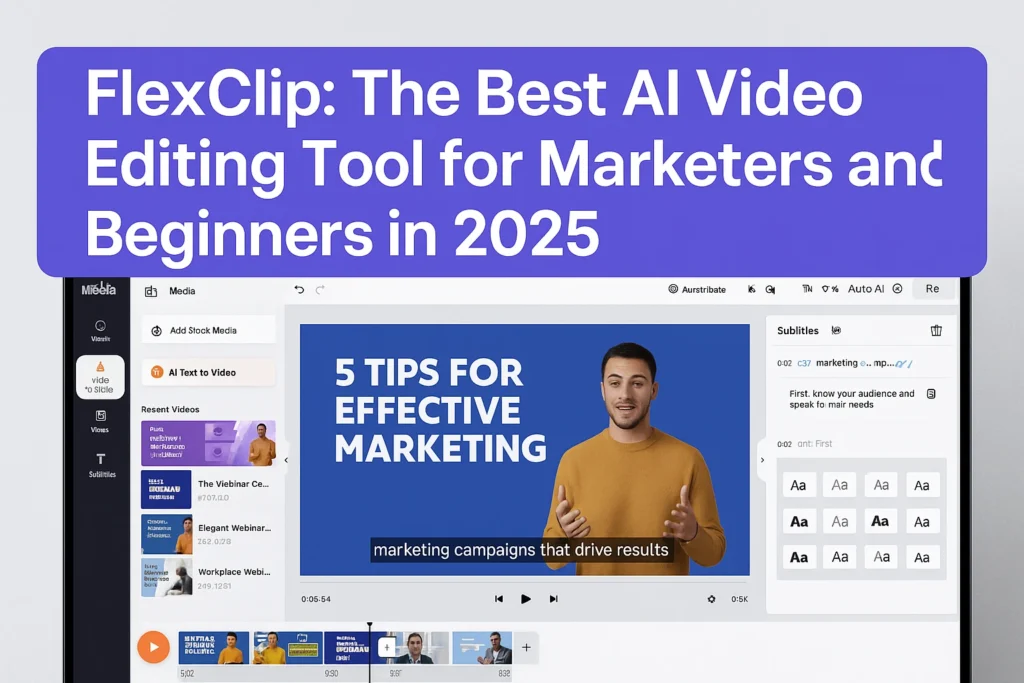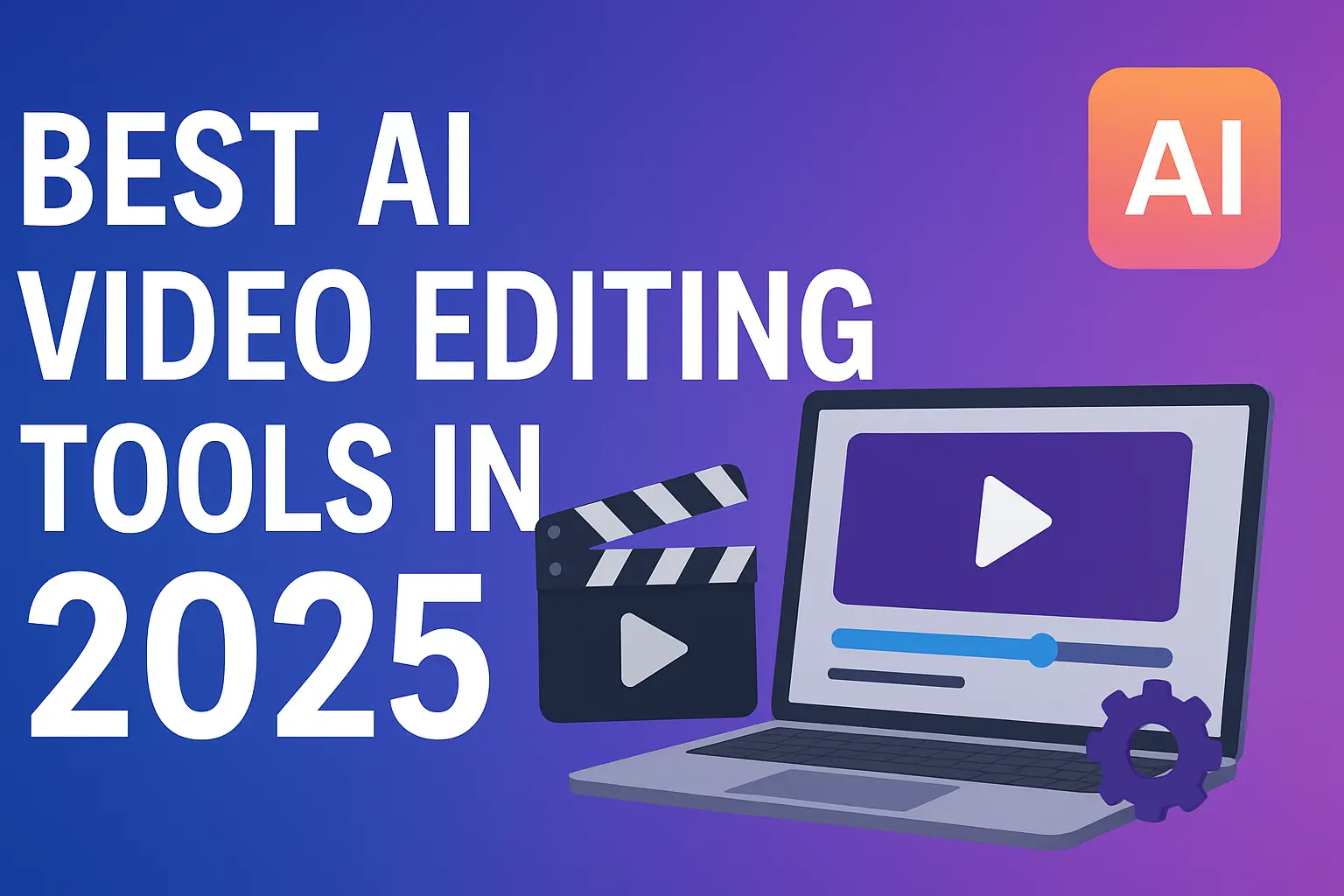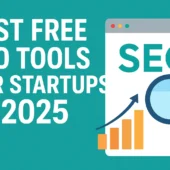By Junaid Imdad, Blogger & Digital Experience Strategist
In this post, we’ll dive deep into the best AI video editing tools in 2025, exploring what they offer, who they are best for, and how you can pick the right one for your needs. I’ll also share tips and pitfalls I’ve seen over time, so you don’t waste time or money.
In 2025, video content isn’t just king—it’s the entire kingdom. With more people consuming content on mobile, social media, and streaming platforms, creators are under constant pressure to produce videos faster, better, and with more flair. The good news? AI video editing tools are helping level the playing field. What used to require hours (or even days), fancy equipment, and steep learning curves can now be done with tools powered by machine learning, smart automation, and generative features.
As someone who has worked with video creators, marketers, and tech teams for five years, I’ve seen this transformation close up. I remember when color correction, masking, and scene transitions were manual pains. Now, many tools automate those parts and even suggest edits for you. But, not all AI video tools are created equal: some are for casual creators wanting quick social clips, others are for professionals who need control and precision.
What “AI Video Editing” Means in 2025
Before the tool list, let’s clarify what we mean by “AI video editing” in 2025. It’s not just cool filters. It includes:
- Automated scene detection / shot transitions: tools decide where to cut, match scenes, or remove redundant footage.
- Text-to-video / script-to-video features: you feed in a script or blog post, and the tool builds a video using stock clips, avatars, voiceovers.
- Background removal / object removal: erase unwanted elements, replace backgrounds, etc.
- Voice recognition / auto-subtitles / automatic captioning: saves tons of time.
- AI color grading / matching / corrections: consistent look across scenes, mood setting, matching lighting.
- Auto-sound adjustments: background noise reduction, audio leveling, adding or mixing music intelligently.
- Templates / smart suggestions / generative transitions / effects: helps non-experts produce polished content.
With those in mind, let’s go through some of the very best tools in 2025, grouped by use case.
Best AI Video Editing Tools in 2025
Here are some of the top tools that I believe are leading the pack in 2025. I’ll describe what makes each special, who it’s good for, cost/trials, and downsides to watch out for.
1. Adobe Premiere Pro with Firefly / Sensei AI features
Why it’s strong:
Adobe has integrated a lot of AI features via Firefly and Sensei. These include:
- Automatic scene transitions and shot detection.
- Auto-reframe (so your video content automatically adjusts for portrait vs landscape vs social aspect ratios).
- Smart caption generation and automatic translation of subtitles.
- AI color matching, auto color correction.
- Media Intelligence: helping you quickly find specific clips by searching content or descriptions.
Best for:
Creators or video editors who need full control and power, but also want speed. Good for professional video work, YouTube, promotional content, or corporate branding.
Cost / Trials:
Premium priced. Adobe usually offers a trial, but many advanced AI features may require paid plan or credits.
Drawbacks:
- Steeper learning curve compared to simpler tools.
- Heavy on system resources; may lag on older computers.
- Some AI automations are helpful but may need manual adjustments to look polished.
2. Runway ML
Highlights:
- Real-time video editing in the browser.
- Features like background removal, object inpainting, style transfer.
- Real-time scene generation, generative AI models that let you add or change elements.
- Strong for social video, creative storytelling, experimenters.
Ideal for:
Content creators, social media marketers, designers who want to experiment and produce visually interesting content without heavy editing tools.
Pricing / Access:
Has free tiers or free credits; paid plans unlock more features.
Things to consider:
- Online tools may be slower or limited for very large/higher-resolution video.
- Some features are still improving in AI accuracy.
3. Pictory
A strong tool for generating short engaging clips from longer content:
What it does well:
- Takes blog posts, scripts, or long-form video and converts into shorter clips.
- Automatic captioning, branding, theme templates.
- Good for social media, YouTube Shorts, Instagram Reels.
Great for:
Marketers, small businesses, startups who produce content regularly and need to repurpose or create snippets.
Pros / Limitations:
Pros: Fast, easy, less technical work.
Limitations: Less precise control over details; might produce generic results if not customized.

4. Descript
What makes it unique:
- Edit video by editing transcript (edit words, delete words, video changes follow).
- Overdub feature (voice cloning / voice synthesis) for small corrections.
- Good audio tools.
Best for:
Podcasters, interview editors, people who want to produce content where speaking/text is important.
Things to watch:
- Overdub can be weird if voice quality isn’t perfect.
- For highly polished video (cinema, effects etc.) you might need supplement with other tools.
5. Wisecut
Focuses on automatic trimming, removing silences, managing pacing:
Features:
- Automatically removes silence or “dead space” in videos.
- Adds background music in suitable places.
- Generates subtitles automatically.
Who it helps:
YouTubers, educators, vloggers — anyone who records long videos and wants to clean them up quickly.
Downsides:
- Less for creative transitions or heavy effects.
- Audio syncing sometimes needs manual tweaks.
6. Magisto
- Owned by Vimeo.
- Simplifies video creation with AI themes, transitions and auto music.
- Great for promos or fast social-media content.
7. FlexClip
FlexClip has really leveled up in 2025, making it one of the top AI video editors for creators who want speed and usability. With FlexClip, you’re not just editing—you’re getting a full suite of tools that help you go from idea to video in minutes. It includes features like Auto-Editor, which detects and cuts out filler or unwanted parts automatically. It also has text-to-video conversion, auto subtitles in many languages, and a huge stock library of music, effects, and templates.
Even better: its web-based editor stores your work in the cloud so you can switch machines without losing progress. For startups and social creators especially, where every minute counts and you need something polished fast, FlexClip hits the sweet spot—easy to use, fairly powerful, and constantly improving.
You can also read our blog on Flexclip.

8. Other Notable Tools
These are also excellent depending on your needs:
- Filmora: easy user interface, lots of beginner-friendly features. Good templates, background removal, auto effects.
- DaVinci Resolve: powerful color grading, advanced effects. Has AI-assisted parts. Good for more serious video work.
- Final Cut Pro X (with AI assists): for Mac users who want speed + usability.
How to Choose the Right Tool for YOU
Not every tool fits every use case. Here’s a framework I use with clients, startups, creators to pick smartly:
| Factor | What to Ask Yourself |
|---|---|
| Purpose & Content Frequency | Are you creating daily social clips? Long-form videos? Tutorials? If you’re posting daily, a tool that automates fast trimming, captions, templates matters more. |
| Level of Control vs Speed | Do you need detailed color grading, advanced effects, precision? Or is speed & easy turn-around more important? |
| Budget | Free tiers vs subscriptions — are you able to spend or do you need almost everything free? |
| Platform / Device | Web-based vs desktop vs mobile. Mac vs Windows. Some tools are better on one platform. |
| Branding & Output Quality | Does it export clean video? No watermarks? Good resolution? Good audio? Export options (aspect ratio, frame rate)? |
| Support & Learning Curve | How quickly can you pick it up? Are there tutorials? Community? Help docs? |
Use Cases & Examples
Here are some scenarios showing which tools make sense:
- Social Media Marketer at Startup
Need: Short clips for Instagram Reels, TikTok; captions; fast output.
Good tools: Runway ML, Pictory, Wisecut. - Corporate Trainer / Educator
Need: Talking head videos, intros/outros, subtitles, voice clarity.
Good tools: Descript, Synthesia, Adobe Premiere Pro. - YouTuber / Long-form Content Creator
Need: Polished editing, transitions, effects, color grading.
Good tools: DaVinci Resolve, Premiere Pro, Filmora. - Small Business Owner
Need: Simple promotional videos, ads, minimal editing, fast results.
Good tools: Magisto, Filmora, maybe Canva (for simple video + graphics).
Pros & Cons (What AI Tools Can’t Always Do Well)
While AI tools are awesome, they’re not perfect. As someone who has used many of them over the years, here are some common limitations to watch:
- Generic look / templated results: many tools tend to produce visually similar styles. If brand differentiation is key, manual polish often helps.
- AI errors: auto captions or voice recognition sometimes mis-transcribe; background removal can miss edges; auto color correction may overdo or underdo.
- Resource demands: high resolution, high framerate editing still requires strong hardware (GPU, CPU, SSD).
- Cost creep: free tiers are great, but many tools limit exports or add watermarks; once you grow, paying is inevitable.
- Learning curve for advanced features: some “AI” features are easy; others still require good editing professionalism (e.g. sound mixing, color matching).
Future Trends in AI Video Editing
From what I’m seeing, here are trends to keep an eye on in 2025–2026:
- More text-to-video tools that work well (stable, realistic).
- Better avatar & voice generation (both more realistic and diverse).
- Generative models that understand context better (so editing suggestions are smarter).
- Collaborations / cloud editing (real-time team editing).
- More affordable / better free plans, as competition increases.
Final Thoughts & Recommendations
If you’re just getting started with AI video editing in 2025, here’s what I recommend:
- Start with one tool: pick based on what fits you (social vs professional vs educational).
- Try free tiers & test outputs: see how the video looks after export (watermarks, audio sync, quality).
- Build a small workflow: maybe write your script → draft with AI tools → polish manually.
- Keep branding in mind: even with AI, use consistent fonts, colors, logos.
AI video tools are no longer futuristic—they are here and evolving fast. If you stay current, creative, and critical of what’s produced, you can create excellent content that looks polished, professional, and cutting-edge—without needing high budgets or special gear.
Check out our blog on ultimate guide for short form video lead generation.

By Junaid Imdad, Blogger & Digital Experience Strategist


